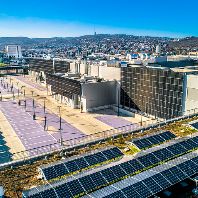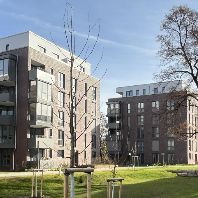The European property market saw €55 bln worth of investment in Q3 2015 taking the total turnover since the start of the year to €157.5 bln, a 20% increase on the same point in 2014, according to the latest figures published by Savills.
The international real estate advisor reports that Portugal (+804%), Norway (+190%) and Italy (+107%) have seen the biggest increases in investment volumes, whilst Greece (-62%), Austria (-40%) and Finland (-18%) saw the biggest decreases. The UK, France and Germany remain the dominant destinations for real estate investment, although their collective share of investment volume decreased slightly from 71% in Q3 2014 to 69% in Q3 2015.
Last quarter, the average prime office yield across Europe decreased by a further 11 basis points (bps). In Lisbon and Paris La Defense the prime office yield compressed by 50 bps and in Warsaw, Milan and Athens by 25 bps. The average prime office yield in a Central Business District now stands at 4.53% - 22bps below the low recorded seven years ago. London West End, Paris CBD and Munich now sit below this average on 4%, with Warsaw, Milan, Lisbon and Athens above at 6%. Since Q2 2012, the yield gap between the core markets and the peripheral markets has been closing, reflecting improving investor confidence in the markets of Ireland, Spain, Italy and, more recently, Portugal. Nevertheless it remains far above the lowest level (23bps) recorded in Q4 2007 at 143bps - close to its long term average (145bps).
More than half (€28 bln) of investment in Q3 2015 originated from overseas, with the majority (59%) directed into just two markets; the UK and Germany. “American and Chinese investors have both been very active in the European market,” comments Marcus Lemli, Head of European Investment at Savills. “Increases in property prices in North America and a strong Dollar have made European property comparatively cheap for American investors, while volatility in the Chinese stock market, property market and currency exchange, have led to Chinese investors seeking a balance in their portfolios through diversification.”
US investors are targeting mainly large single assets or portfolio deals with no specification in terms of assets class, with 75% of US investment volume allocated to Norway, Sweden, the UK and Demark - non-Eurozone countries – supplemented by an above average appetite for logistics assets found mainly in Poland, the Czech Republic and the Nordics. Chinese investors, despite the devaluation of the Yuan, have already put €3.4 bln into the European market since the start of the year; 58% above the volume recorded for the whole of 2014. Year on year, the share of Chinese investment in the UK decreased from 84% to 23%, to the benefit of Eurozone countries. In the past 12 months the size of Chinese deals has increased: as indicated by the purchase of the Celsius shopping centre portfolio spread in Belgium and France by the Chinese Sovereign Wealth Fund CIC for €1.2 bln in June this year.
Lydia Brissy, Director European Research at Savills, comments: “We anticipate average rental growth in Europe of between 2.5% and 3% in 2016. Strengthening confidence in the occupier market adds additional appeal to a European market already benefiting from positive spread between bond and property yields, although growing competition and activity from US and Chinese investors will inevitably put pressure on yields. With record high prices we anticipate more assets coming to the market, fuelling further demand and leading to a very strong final quarter. We therefore predict that 2015 is on track to see turnover volumes reaching €234 bln by the end of the year – the highest ever.”
Source: Savills















